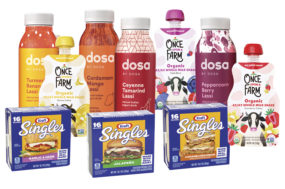The Composite Dairy Cattle Registry (CDCR) has made numerous strides since July 2013, offering registration opportunities to the Fleckvieh, Montbeliarde, Norwegian Red, Red Dane, Swedish Red and White, and any other dairy cross that breeders and producers wish to register to preserve and document the ancestry of their animals.
Dr. Les Hansen, dairy geneticist at the University of Minnesota, applauds the efforts. “My observation is you are making remarkable progress in a short period of time in getting people to think more open-mindedly about allowing the accurate identification on cattle from the non-traditional dairy breeds in the U.S., as well as their crossbred offspring,” he said.
Producers are excited about these dairy crosses. They find these cows equal or out-produce their Holsteins in the herd. Other things dairymen are seeing with these crosses are increased fertility, higher components, lower somatic cell counts, healthier animals and longer productive life.
On the listings include outstanding Fleckvieh bulls. From Big Bear Genetics in Canada is an exciting new bull 297FL01048 “BFG REUMUT 10-850712” with 96 daughters that is +682kg Milk, +.05 Fat percent, +33kg Fat, +.01 Protein percent, +24kg Protein (German proof).
From Global Genetic Resources 504FL00080 “VANSTEIN 10-191658” the most used Fleckvieh bull in Europe with over 61,000 daughters that is +599kg Milk, +.02 Fat percent, +27kg Fat, +.05 Protein percent, +25 Protein (German proof). Also representing the Montbeliarde are three bulls marketed by Genex.
The CDCR, with some help, has been able to secure the breed code of FL to identify the Fleckvieh breed. Along with this new breed code assignment it has been able to persuade the distributors to enroll the Fleckvieh bulls for cross-referencing with the NAAB. The group also has been cross-referencing lists on its website.
From the response, and the amount of semen marketed of these two breeds over that past 10 years, we estimate there are well more than 100,000 of these animals representing these breeds, from crossbreds to full-blood animals (through imported embryos).
These breeds continue to grow and become more popular as producers see the advantages. The group says it also is seeing increased interest in registering and identifying these and other crossbred animals. PD
—From Composite Dairy Cattle Registry news release


